Stranger Things fans left confused by pivotal scene in new episodes
Fans believe moment should have been made much clearer

© Netflix
Fans believe moment should have been made much clearer

© Netflix
Punk singer’s wife of almost 50 years died in 2023

© Getty Images

Despite funding cuts and shuttered venues, homegrown music, TV, film and, yes, memes have dominated the global zeitgeist over the past 12 years. Now this culture must be future-proofed from the forces of globalisation
On the face of it, British culture looks doomed. Our music industry is now borderline untenable, with grassroots venues shuttering at speed (125 in 2023 alone) and artists unable to afford to play the few that are left; touring has become a loss leader that even established acts must subsidise with other work. Meanwhile, streaming has gutted the value of recorded music, leading to industry contraction at the highest level: earlier this year the UK divisions of Warners and Atlantic – two of our biggest record labels – were effectively subsumed into the US business.
In comedy, the Edinburgh fringe – the crucible of modern British standup, sketch and sitcom – is in existential crisis thanks to a dearth of sponsorship and prohibitively high costs for performers. Our film industry is at this point almost totally reliant on (dwindling) US funds; while Britain remains a popular filming destination due to tax breaks and appealing locations, the vast majority of the productions made here ultimately generate American profits.
Continue reading...
© Composite: Apple TV +, Getty Image, Courtesy of Netflix, Focus Features ©2025 All Rights Reserved, BBC/Various Artists Limited/James Stack
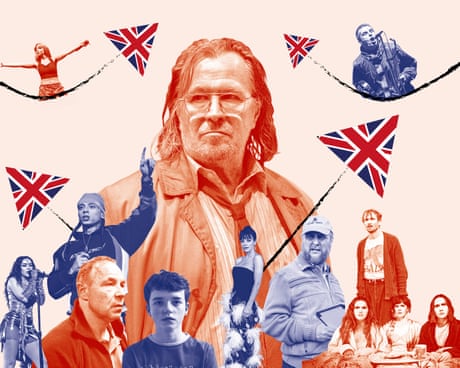
© Composite: Apple TV +, Getty Image, Courtesy of Netflix, Focus Features ©2025 All Rights Reserved, BBC/Various Artists Limited/James Stack
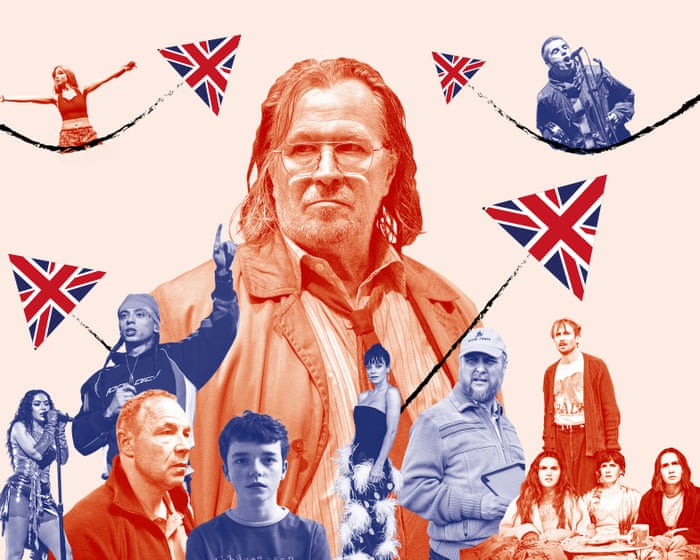
© Composite: Apple TV +, Getty Image, Courtesy of Netflix, Focus Features ©2025 All Rights Reserved, BBC/Various Artists Limited/James Stack
From a folk murder ballad to an impassioned call for peace, Guardian writers pick their favourite lesser-heard tracks of the year
There is a sense of deep knowing and calm to Not Offended, the lone song released this year by the Danish-Montenegrin musician (also an earlier graduate of the Copenhagen music school currently producing every interesting alternative pop star). To warmly droning organ that hangs like the last streak of sunlight above a darkening horizon, Milovic assures someone that they haven’t offended her – but her steady Teutonic tenderness, reminiscent of Molly Nilsson or Sophia Kennedy, suggests that their actions weren’t provocative so much as evasive. Strings flutter tentatively as she addresses this person who can’t look life in the eye right now. “I see you clearly,” Milovic sings, as the drums kick in and the strings become full-blooded: a reminder of the ease that letting go can offer. Laura Snapes
Continue reading...
© Composite: PR

© Composite: PR

© Composite: PR

The Punjabi photographer was delighted with this stunning shot of birds being fed on the Yamuna River in Delhi
Sachin Ghai describes Yamuna Ghat in Delhi, India, as his idea of a photographer’s paradise. “In winter, thousands of migratory birds circle the wooden row boats on the river,” he says. “During foggy, golden sunrises it makes for incredible images.”
For Ghai, travel photography is a passion, so he had orchestrated a short trip from his home in Nabha, Punjab. First, he had visited Agra, to capture the Taj Mahal. The next morning, he awoke before dawn to visit the Yamuna River. Despite being one of the most polluted bodies of water in the world, locals can be seen fishing while visitors take boat rides from the ghat, the name for the flight of stairs that leads to the water.
Continue reading...
© Photograph: Sachin Ghai/ 2025 Türkiye Mobile Photo Awards
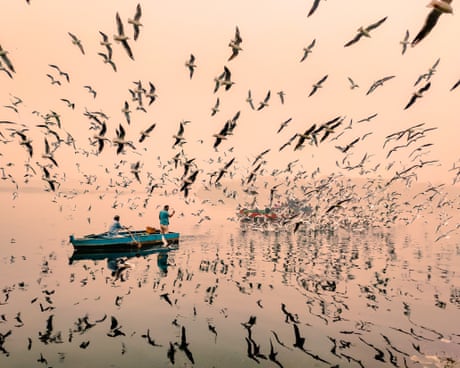
© Photograph: Sachin Ghai/ 2025 Türkiye Mobile Photo Awards
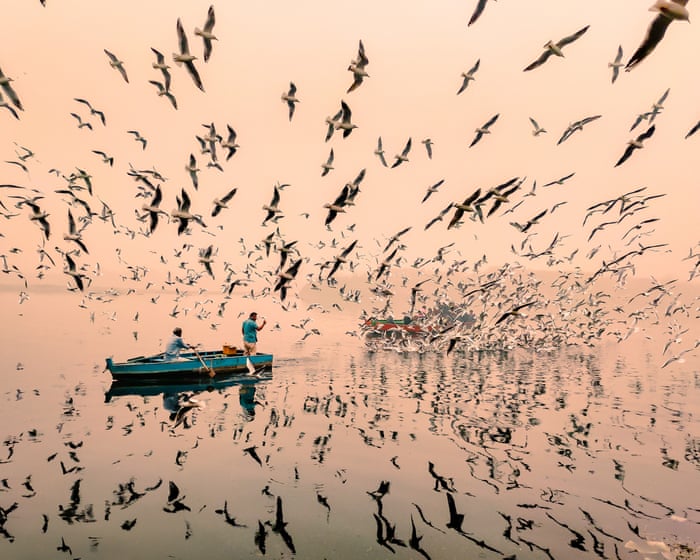
© Photograph: Sachin Ghai/ 2025 Türkiye Mobile Photo Awards
Extremist messaging now woven into music and YouTube videos, with one expert saying: ‘You can be radicalised sitting on your couch’
The two men chop peppers, slice aubergines and giggle into the camera as they delve into the art of vegan cooking. Both are wearing ski masks and T-shirts bearing Nazi symbols.
The German videos – titled Balaclava Kitchen – started in 2014 and ran for months before YouTube took down the channel for violating its guidelines.
Continue reading...
© Photograph: Martin Meissner/AP

© Photograph: Martin Meissner/AP

© Photograph: Martin Meissner/AP
From Joe Marler’s visual-only stunts to the incomprehensible shuffling sounds Steven Bartlett recently subjected headphone users to, dodgy audio experiences are on the rise
To understand where we are in the evolution of podcasting, the opening episode of Joe Marler Will See You Now is unexpectedly instructive. The podcast finds Marler, former rugby player and breakout star of The Celebrity Traitors, impersonating a psychotherapist and subjecting guests to “totally unregulated psychological testing”. The mock-therapy conceit is hardly a new one, but on paper it still has the makings of a successful pod. Celebrity host fresh from ratings-busting TV triumph? Check. Fancy studio setup for the viewing crowd? Check. Weird visual stunts that will leave audio listeners baffled? Er … check?
The big news in podcasting from the last 18 months has been the medium’s swift and unstoppable pivot to video. Where a podcast was previously defined as an audio recording available to stream online, it has since expanded to become an umbrella term taking in visual and audio content. The idea, at least in theory, is that audiences get to choose whether they watch or listen. But there are creeping signs that video is taking precedence, with audio considered to be secondary.
Continue reading...
© Photograph: Tom Harrison

© Photograph: Tom Harrison

© Photograph: Tom Harrison
Biography also claims singer was ‘lucky to survive’ health incident year before death

© Getty Images
‘Some of the original main cast is getting little to zero screen time,’ complained one fan. ‘I mean, what are doing here?’

© Netflix
Second part of the series’ final season is now streaming ahead of the highly anticipated New Year’s Eve finale

© COURTESY OF NETFLIX © 2025
As a child he performed in the West End and appeared in a Stormzy video. But after his early music career faltered, he began to write about his troubled childhood – and hit a nerve
From Newham, London
Recommended if you like Dave, Bashy, Nemzzz
Up next Debut mixtape planned for spring
It’s a measure of how quickly Keaton Edmund, AKA Kidwild, has speed-run his way through a performing arts career that the rapper describes himself as being in the “comeback part of my life” at age 20.
Continue reading...
© Photograph: Sam Fallover

© Photograph: Sam Fallover

© Photograph: Sam Fallover

Ces accessoires ne sont pas réellement indispensables, mais ils font toute la différence autour de la table. Découvrez notre sélection pour améliorer le confort, l’organisation et le plaisir de vos parties de jeux de société.

Ces accessoires ne sont pas réellement indispensables, mais ils font toute la différence autour de la table. Découvrez notre sélection pour améliorer le confort, l’organisation et le plaisir de vos parties de jeux de société.
In this week’s newsletter: We’ve had our say; now it’s your turn. Overlooked telly gems, unforgettable gigs and albums on repeat – readers share the cultural moments that made their year
• Don’t get The Guide delivered to your inbox? Sign up here
Merry Christmas – and welcome to the last Guide of 2025! After sharing our favourite culture of the year in last week’s edition, we now turn this newsletter over to you, our readers, so you can reveal your own cultural highlights of 2025, including some big series we missed, and some great new musical tips. Enjoy the rest of the holidays and we’ll see you this time next week for the first Guide of 2026!
Continue reading...
© Composite: Des Willie/Channel 4; Pictorial Press Ltd/Alamy; Sam Penn; Sarah Shatz/FX
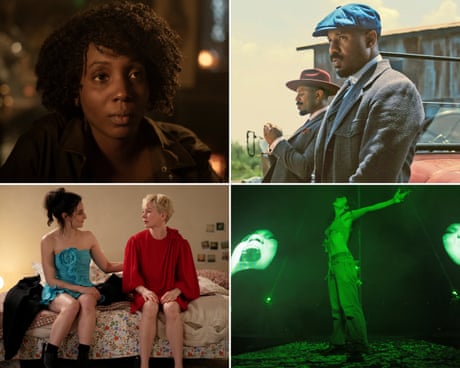
© Composite: Des Willie/Channel 4; Pictorial Press Ltd/Alamy; Sam Penn; Sarah Shatz/FX
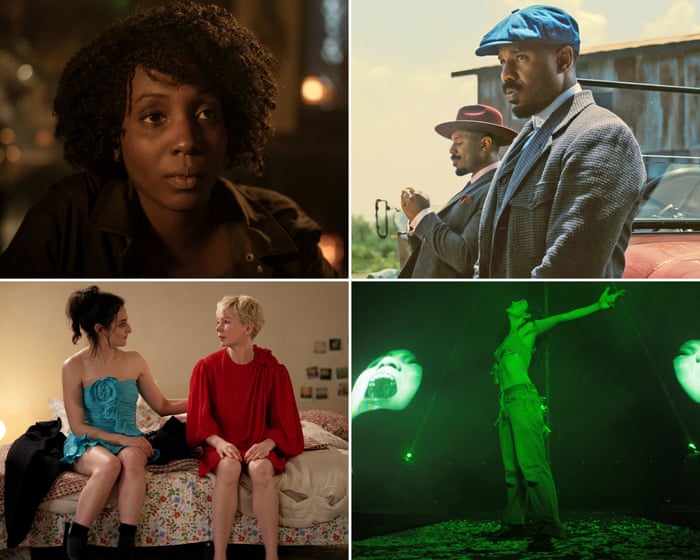
© Composite: Des Willie/Channel 4; Pictorial Press Ltd/Alamy; Sam Penn; Sarah Shatz/FX
Maggie O’Farrell, Yann Martel and Julian Barnes are among the authors publishing new novels this year
The beginning of the books calendar is usually dominated by debuts, but January 2026 sees releases from some of the year’s biggest authors. Known for his surreally bittersweet short stories, George Saunders has written only one novel so far – but that one won the Booker prize. The follow-up to 2017’s Lincoln in the Bardo, Vigil (Bloomsbury) focuses on an unquiet spirit called Jill who helps others pass over from life to whatever comes next. She is called to the deathbed of an oil tycoon who is rapidly running out of time to face up to his ecological crimes, in a rallying cry for human connection and environmental action. Ali Smith’s Glyph (Hamish Hamilton) is a companion to 2024’s Gliff, and promises to tell a story initially hidden in that previous novel. Expect fables, siblings, phantoms and horses in a typically playful shout of resistance against war, genocide and the increasingly hostile social discourse. And in Departure(s) (Jonathan Cape), Julian Barnes announces his own – this blend of memoir and fiction, exploring memory, illness, mortality and love across the decades, will be his last book. “Your presence has delighted me,” he assures the reader. “Indeed, I would be nothing without you.”
The Hamnet adaptation hits UK cinemas in January, but Maggie O’Farrell’s next novel isn’t out until June. Land (Tinder), a multigenerational saga which opens in 19th-century Ireland in the wake of the famine, is inspired by her own family history and centres on a man tasked with mapping the country for the Ordnance Survey. There’ll be much anticipation, too, for The Things We Never Say from Elizabeth Strout (Viking, May). The ultra-prolific Strout is adored for her interconnected novels, but this story of a man with a secret is a standalone, introducing characters we’ve never met before. In John of John (Picador, May) Douglas Stuart, author of much-loved Booker winner Shuggie Bain, portrays a young gay man returning home from art school to the lonely croft on the Hebridean island where he grew up. And September sees a new novel from Irish writer Sebastian Barry: The Newer World (Faber) follows Costa winner Days Without End and A Thousand Moons in transporting the reader to late 19th-century America in the aftermath of the Civil War.
Continue reading...
© Illustration: David Newton/Photo by David Levene
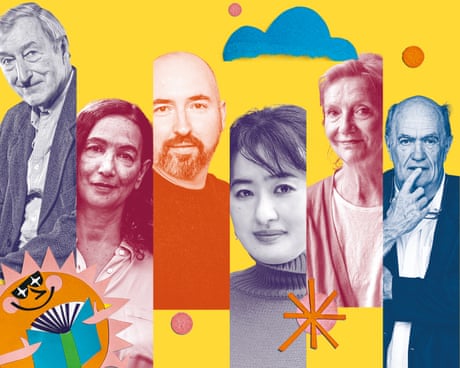
© Illustration: David Newton/Photo by David Levene
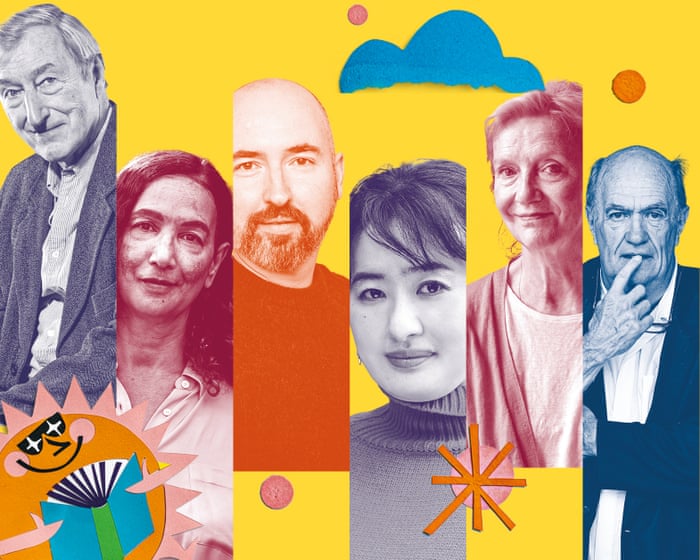
© Illustration: David Newton/Photo by David Levene
Fear and feelings of intense vulnerability caused me to retreat into my shell, until I saw myself in an unlikely feature in one of the British master’s prints
My thyroid cancer arrived by accident, in the way life-changing things sometimes do. In May of this year, I went for an upright MRI for a minor injury on my arm, and the scan happened to catch the mass in my neck. By the following month, I had a diagnosis. People kept telling me it was “the good cancer”, the kind that can be taken out neatly and has a high survival rate. But I’m 54, and my dad died of cancer in his 50s, so that shadow came down on me hard.
My eldest son was doing A-levels at the time, so we didn’t tell him at first. I felt as if I’d stepped across some irreversible Rubicon that you hear about happening to other people, but never imagine will actually come for you.
Continue reading...
© Illustration: Martin O'Neill/The Guardian
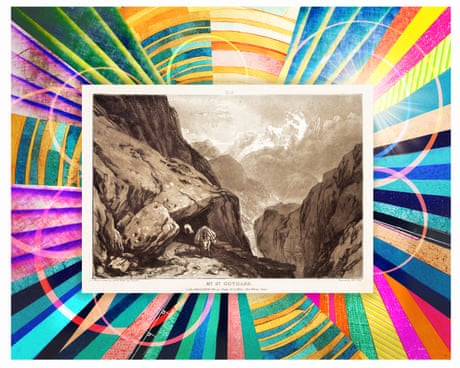
© Illustration: Martin O'Neill/The Guardian
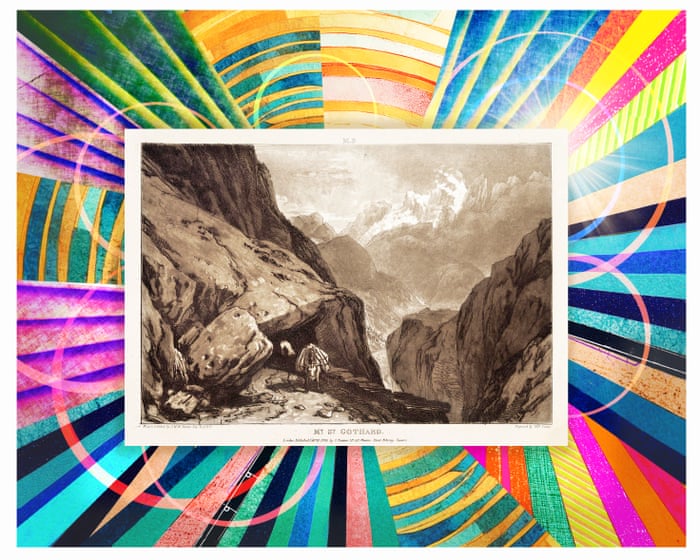
© Illustration: Martin O'Neill/The Guardian
A powerful tale of absent fathers and estranged children, Joachim Trier’s ‘Sentimental Value’ – his follow-up to the acclaimed ‘Worst Person in the World’ – is primed for Oscar glory come 2026. Annabel Nugent speaks to Trier and his actors Stellan Skarsgård, Renate Reinsve, Inga Ibsdotter Lilleaas and Elle Fanning about parenting, sacrifice, and the importance of making mistakes

© Ben Trivett/Shutterstock
The Masked Singer Christmas special ended with a surprise when the winning celebrity was finally revealed.

© ITV, The Masked Singer: Christmas Special